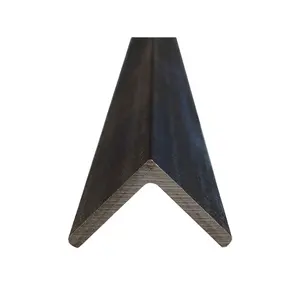
Factory Wholesale Steel Angle Bar Unequal Q235 Q235b 22x3mm Angle Bar Galvanized Steel Angle Bar For Construction










An angle bar, also known as an L-bracket or angle iron, is a metal product integral to various construction and engineering projects. This product category is characterized by its L-shaped cross-section, providing strength and stability to structures. Available in a range of materials, including stainless steel, carbon steel, and galvanized steel, angle bars are designed to meet diverse industry requirements.
The manufacturing of angle bars involves several techniques to suit different applications. Hot rolled and cold rolled methods are common, with forging and cold drawing also employed for specific needs. The choice of material and technique directly impacts the bar's properties, such as durability and resistance to corrosion. Stainless steel angle bars offer rust resistance, while carbon steel variants are known for their strength, and galvanized steel angle bars provide additional rust resistance.
Angle bars come in various sizes, ranging from smaller dimensions of 25mm x 25mm to larger sizes up to 250mm x 250mm. The length of these bars typically spans from 6m to 12m, with thickness measurements starting from 2.5mm to 35mm. The design of an angle bar can be customized, featuring even or uneven sides, and can be perforated or non-perforated to accommodate different joining methods like bolting or welding.
The primary use of an angle bar is in construction, where it serves as a fundamental component for frameworks, shelving, and structural reinforcements. Its applications extend to the construction of transmission towers, vessel fabrication, roof construction, and repair work. A specialized form, the double ribbed angle bar, is utilized in building construction to support bricks above doors and windows.
Angle bars are esteemed for their mechanical strength and versatility. Their angular shape and robust construction make them difficult to bend, which is essential for supporting heavy loads in construction work. The variety of grades and standards available ensures that there is a suitable angle bar for different regional requirements and industry standards.
Selecting the appropriate angle bar for a project involves considering the specific requirements of the application, such as the desired strength, corrosion resistance, and the type of material. With a multitude of options available on Alibaba.com, buyers can find the right product to meet their project specifications. The platform's extensive network of suppliers offers a diverse selection of angle bars to cater to global industry needs.